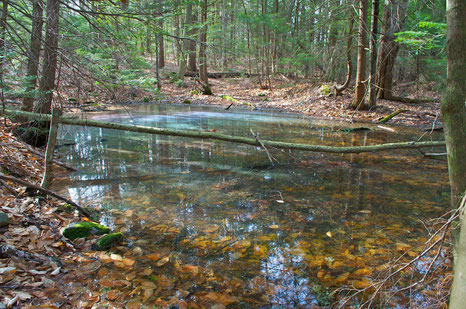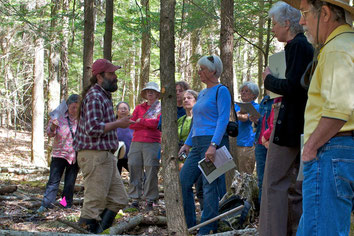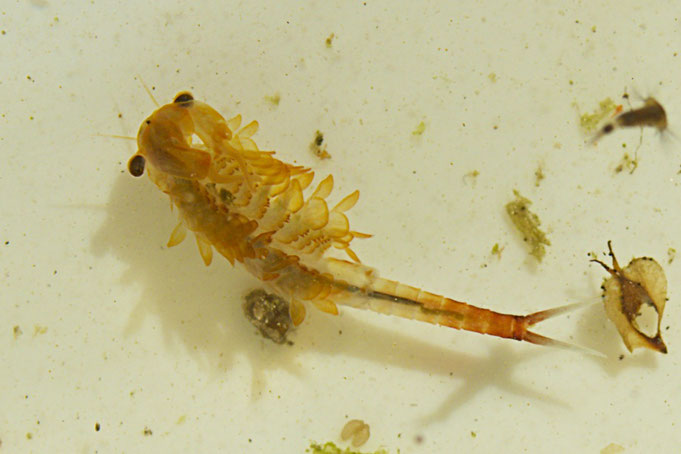The Vernal Pools of Distant Hill

We are lucky to have ten vernal pools on the fifty-eight acres that make up Distant Hill Gardens. Vernal pools are temporary bodies of fresh water that provide important habitat for many vertebrate and invertebrate species.
“Vernal” means spring, and indeed, many vernal pools are filled by spring rains and snowmelt, and then dry during the summer. However, many vernal pools are filled by autumn rains (i.e., “autumnal pools”) and persist through the winter and others are semi-permanent and do not dry every year.

Vernal pools constitute a unique and increasingly vulnerable type of wetland. They are inhabited by many species of wildlife, some of which are totally dependent on vernal pools for their survival. Vernal pools do not support fish. Some dry out annually or at least periodically, while those that contain water year round are free of fish as a result of significant drawdowns that result in extremely low dissolved oxygen levels.

The Wood Frog (Rana sylvatica) and four local species of mole salamander (Ambystoma spp.) have evolved breeding strategies intolerant of fish predation on their eggs and larvae; the lack of established reproducing fish populations is essential to the breeding success of these species.
At Distant Hill Gardens we have breeding populations of wood frogs, and populations of two of the four species of mole salamander native to this region of New Hampshire:
the Spotted Salamander (A.
maculatum) and the Jefferson
salamander (A. jeffersonianum). Two of our vernal pools support populations of Fairy Shrimp (Anostraca sp.),
a very interesting crustacean dependent on these seasonal pools.
For more about vernal pools and how to document them go to AVEO, the Ashuelot Valley Observational Observatory's Vernal Pool Project Page, AVEO is the citizen science arm of the Harris Center for Conservation Education.
Or check out the 'Natural Heritage & Endangered Species Program' of the Massachusetts Division of Fisheries & Wildlife's
Guidelines for the Certification of Vernal Pool Habitat
Distant Hill was listed as one of the Top 10 Places to Visit in New Hampshire!
Friends of Distant Hill (dba Distant Hill Gardens and Nature Trail) is a nonprofit,
tax-exempt organization under Section 501(c)(3) of the U.S. Internal Revenue Code.
Donations are tax-deductible as allowed by law. Tax ID# 84-3765898
or send a check via Snail Mail to:
Distant Hill Gardens and Nature Trail, 507 March Hill Road, Walpole, NH 03608





